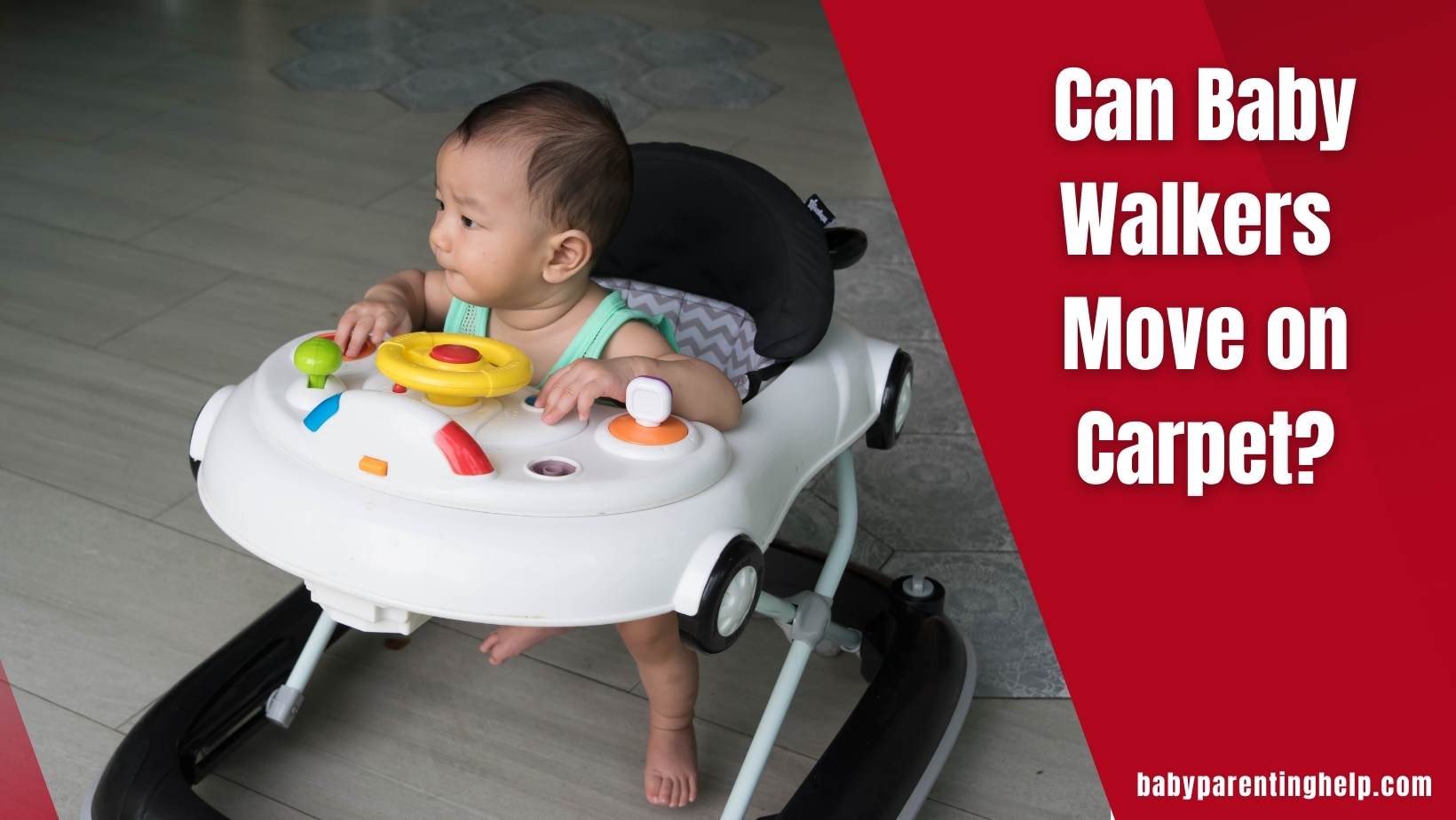Baby walkers are popular among parents who want to facilitate their child’s mobility and encourage early walking. However, when using baby walkers on carpeted floors, there are specific considerations to remember. In this article, we will explore whether baby walkers can effectively move on carpets and discuss the potential benefits and drawbacks of using them in this context.
Contents
- 1 Baby Walkers and their purpose
- 2 How do baby walkers work?
- 3 Carpeted floors and their impact on baby walkers
- 4 Benefits of using baby walkers on carpet
- 5 Drawbacks of using baby walkers on carpet
- 6 Tips for using baby walkers on carpeted floors
- 7 Alternatives to baby walkers on carpet
- 8 Conclusion
- 9 F.A.Q.s
Baby Walkers and their purpose
Baby walkers are devices designed to support and assist infants in their journey towards independent walking. They typically consist of a seat surrounded by a frame with wheels. The purpose of a baby walker is to allow babies to explore their surroundings while providing some stability and support.
How do baby walkers work?
Baby walkers function by allowing babies to sit comfortably in the seat while their feet touch the ground. As they push off with their feet, the wheels on the walker enable them to move around. This repetitive motion helps babies develop the necessary muscles and coordination for walking.
Carpeted floors and their impact on baby walkers
Carpeted floors can pose challenges for baby walkers due to their textured and cushioned surface. The increased friction between the wheels and the carpet fibres makes it harder for the walker to move smoothly. The thicker pile of carpet can further impede the walker’s progress.
Benefits of using baby walkers on carpet
– Enhanced stability and safety
One advantage of using baby walkers on carpeted floors is their enhanced stability. The carpet’s softness is a cushion, reducing the risk of slips and falls. This can be particularly beneficial for babies still developing balance and coordination skills.
– Cushioned support for the baby’s feet
Walking on a carpeted surface offers a softer landing for the baby’s feet than hard flooring. The carpet provides a cushioned support, which can be more comfortable for the baby and alleviate any potential discomfort or pressure on their feet.
– Reduced impact on joints and bones
The slight resistance offered by the carpet’s texture can also be advantageous. It helps absorb some impacts and reduces the strain on the baby’s joints and bones, promoting a safer walking experience.
Drawbacks of using baby walkers on carpet
– Limited manoeuvrability
Carpeted floors can restrict the movement of baby walkers. The increased friction between the wheels and the carpet fibres makes navigating corners or turning in different directions more challenging. This limitation may frustrate some babies and hinder their exploration.
– Increased effort required to move
The resistance caused by the carpet’s texture requires more effort from the baby to move the walker forward. This extra exertion may tire the baby more quickly, reducing their enthusiasm for using the walker.
– Potential damage to carpets
Repeated use of baby walkers on carpets can cause wear and tear on the carpet fibres. The constant movement and friction between the wheels and the carpet may result in flattened areas or even damage to the rug, necessitating repairs or replacement.
Tips for using baby walkers on carpeted floors
To make the most of using baby walkers on carpeted floors, consider the following tips:
- Choose a walker with larger wheels: Larger wheels tend to perform better on carpets as they can roll more quickly over the textured surface.
- Adjust the walker to the appropriate height: Ensuring it is set at the correct size for your baby will optimize their comfort and mobility.
- Regularly clean the wheels to ensure smooth movement: Carpet fibres can get entangled in the wheels, affecting their performance. Periodically cleaning the reels will help maintain smooth movement.
- Provide additional support and supervision: While using baby walkers on carpets, it’s essential to provide additional support and closely supervise your baby to ensure their safety.
Alternatives to baby walkers on carpet
Alternative options exist if using a baby walker on a carpeted floor proves challenging. Some alternatives include stationary activity centres, push toys, or simply providing a safe, open play area for your baby to practice walking independently.
Conclusion
In conclusion, baby walkers can indeed move on carpeted floors, but there are factors to consider. While carpeted surfaces offer some benefits, such as enhanced stability and reduced impact on joints, drawbacks include limited manoeuvrability and potential damage to carpets. Following the tips and considering alternative options, parents can decide whether to use baby walkers on carpeted floors.
F.A.Q.s
Q1: Can I use a baby walker on all types of carpets?
Yes, baby walkers can generally be used on most types of carpets. However, the thickness and texture of the rug can affect the walker’s performance.
Q2: At what age can I introduce my baby to a walker?
It is generally recommended to raise a baby walker when the baby can sit independently and has developed sufficient leg strength, usually around 6 to 8 months. Always consult with your paediatrician before using a baby walker.
Q3: Are baby walkers safe for babies?
Baby walkers can be safe when used correctly and under supervision. Following the manufacturer’s guidelines and providing additional support and care is essential to ensure the baby’s safety.
Q4: How long can my baby use a walker each day?
Limiting the time your baby spends in a walker to no more than 15-20 minutes at a time is recommended. Prolonged use can hinder natural development and limit opportunities for crawling and exploring.
Q5: Are there any risks associated with using baby walkers on the carpet?
The main risks associated with using baby walkers on carpeted floors include limited manoeuvrability and potential damage to rugs. Taking precautions and closely supervising your baby is crucial to mitigate these risks.

I am an accomplished writer, a devoted father, and a compassionate advocate for new and experienced parents in my baby’s parenting journey. With a wealth of firsthand experience and a deep understanding of the joys and challenges of raising children, I become a trusted voice in the parenting community.


